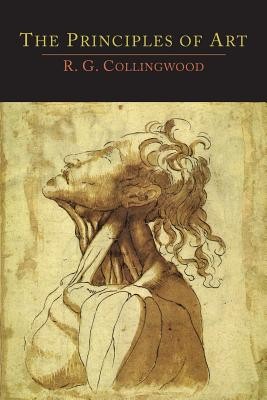
- We will send in 10–14 business days.
- Author: R G Collingwood
- Publisher: Martino Fine Books
- Year: 2014
- Pages: 360
- ISBN-10: 1614275602
- ISBN-13: 9781614275602
- Format: 15.2 x 22.9 x 2 cm, minkšti viršeliai
- Language: English
- SAVE -10% with code: EXTRA
Reviews
Description
2014 Reprint of 1938 Edition. Full facsimile of the original edition, not reproduced with Optical Recognition Software. R. G. Collingwood (1889-1943) was primarily a general philosopher and philosopher of history, and considered his work in aesthetics-the principal work being his "The Principles of Art" (1938)-as secondary. But the work in aesthetics has enjoyed a persistent readership that continues into the present. In the years after WWII he was probably the most widely read and influential aesthetician to have written in English since Addison, Hutcheson and Hume (not counting Ruskin as an aesthetician), and to this day continues to make his way into anthologies as a principal proponent of the expressive theory of art. In the field of the philosophy of history, Collingwood famously held the doctrine of 'Re-enactment': since the subject is human beings in action, the historian cannot achieve understanding by describing what happened from an external point of view, but must elicit in the reader's own mind the thoughts that were taking place in the principal actors involved in historical events. Similarly, the aesthetic procedure is one whereby the artist and spectator jointly come to realize, to come to know, certain mental states. Art is fundamentally expression. Collingwood saw two main obstacles to general understanding and acceptance of this: First, the word 'art' has surreptitiously acquired multiple meanings among ordinary folk which should be disentangled; second, a philosophical theory of the phenomenon of expression is needed to show that it is an essential part of the life of the mind, not just a special activity that poets go in for.
EXTRA 10 % discount with code: EXTRA
The promotion ends in 23d.15:22:26
The discount code is valid when purchasing from 10 €. Discounts do not stack.
- Author: R G Collingwood
- Publisher: Martino Fine Books
- Year: 2014
- Pages: 360
- ISBN-10: 1614275602
- ISBN-13: 9781614275602
- Format: 15.2 x 22.9 x 2 cm, minkšti viršeliai
- Language: English English
2014 Reprint of 1938 Edition. Full facsimile of the original edition, not reproduced with Optical Recognition Software. R. G. Collingwood (1889-1943) was primarily a general philosopher and philosopher of history, and considered his work in aesthetics-the principal work being his "The Principles of Art" (1938)-as secondary. But the work in aesthetics has enjoyed a persistent readership that continues into the present. In the years after WWII he was probably the most widely read and influential aesthetician to have written in English since Addison, Hutcheson and Hume (not counting Ruskin as an aesthetician), and to this day continues to make his way into anthologies as a principal proponent of the expressive theory of art. In the field of the philosophy of history, Collingwood famously held the doctrine of 'Re-enactment': since the subject is human beings in action, the historian cannot achieve understanding by describing what happened from an external point of view, but must elicit in the reader's own mind the thoughts that were taking place in the principal actors involved in historical events. Similarly, the aesthetic procedure is one whereby the artist and spectator jointly come to realize, to come to know, certain mental states. Art is fundamentally expression. Collingwood saw two main obstacles to general understanding and acceptance of this: First, the word 'art' has surreptitiously acquired multiple meanings among ordinary folk which should be disentangled; second, a philosophical theory of the phenomenon of expression is needed to show that it is an essential part of the life of the mind, not just a special activity that poets go in for.


Reviews